Learning Center
Reading
Clarify character traits versus feelings
April 17, 2017
Inquiring about character traits is a typical reading comprehension question. However, students often respond with comments like I think she’s mad or I think he’s glad or I think they’re sad. They offer information about character feelings rather than traits.
What are character traits?
Students respond with basic feeling words because emotions like happy, mad, and sad are easily recognizable and easily relatable with the characters. This leads students to describe a character’s feelings at the moment rather than how a character habitually acts.
It takes a much deeper analysis to uncover the innate traits of a person. Character traits are more enduring patterns of behavior that extend beyond how a character might feel in a specific situation.
What to teach on character traits
In order for students to understand the distinction, explicitly define the differences between character feelings and traits. Note the alliteration at the top of the handout: Character feelings are fleeting; A character trait is tried & true.
Define fleeting as something that is temporary. Feelings come and go; they are based on the environment. One minute, someone is happy. But, if something bad suddenly happens, feelings can switch to sad. Feelings change constantly; feelings are fleeting.
On the other hand, traits are tried and true. Traits are constant. It doesn’t matter what the setting or circumstance, a trait is steadfast. If someone is loyal, he will be loyal to his family, his friends, his coworkers, etc. He would be loyal all the time. “Loyal” is a character trait because it is tried and true.
Once students grasp the distinction between character feelings and traits, teach them how to track and analyze a character’s habits, motivations, actions, and responses, to unveil their underlying character traits.
How to teach character traits
An inherent problem with students learning character traits is that these are unfamiliar words. They know mad, sad, glad. But they don’t know conceited, gullible, pensive. Therefore, make character-traits a part of vocabulary instruction. Apply the same strategies to teach these words as would be employed to introduce new terms in math, science, or social studies.
Compare the unfamiliar trait words with familiar synonyms students already know.
In addition, maintain a list of characters who demonstrate each character trait. Examples of literary characters, TV characters, movie characters, famous people, etc. will support students’ growing understanding of the bigger trait term.
When to teach character traits
Focus on grade-level appropriate character traits. According to research by Patrick Manyak (The Reading Teacher, March, 2007), vocabulary instruction should target 20 trait words per grade level.
Studying the characters within the most commonly-read picture books read per grade (K-6), Manyak identified the character qualities that the familiar characters possess. Consequently, teachers can incorporate teaching character traits while reading the same read-aloud texts they have already planned within their curriculum.
SECONDARY TEACHERS: The character trait examples list ends at grade 6. Middle school and high school teachers should print off the list and highlight the traits students don’t know, beginning with the kindergarten words. Stop after highlighting the first twenty. Target those first.
Utilize commonly read books to identify characters’ qualities that align with these target traits. The Way That I Feel and The Way That I Act are great picture books to help distinguish character traits versus character feelings.

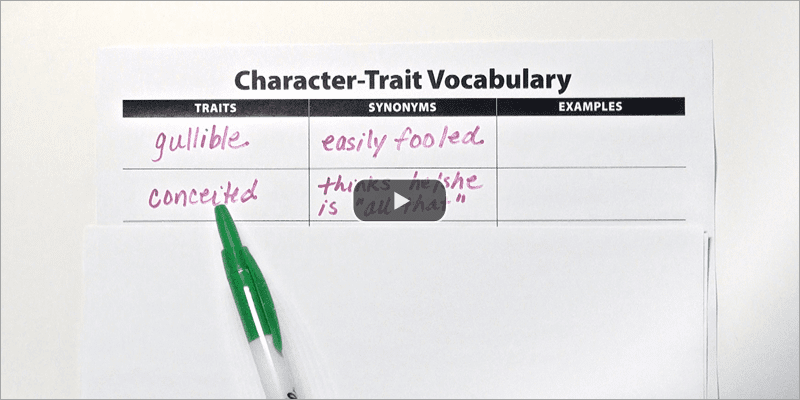
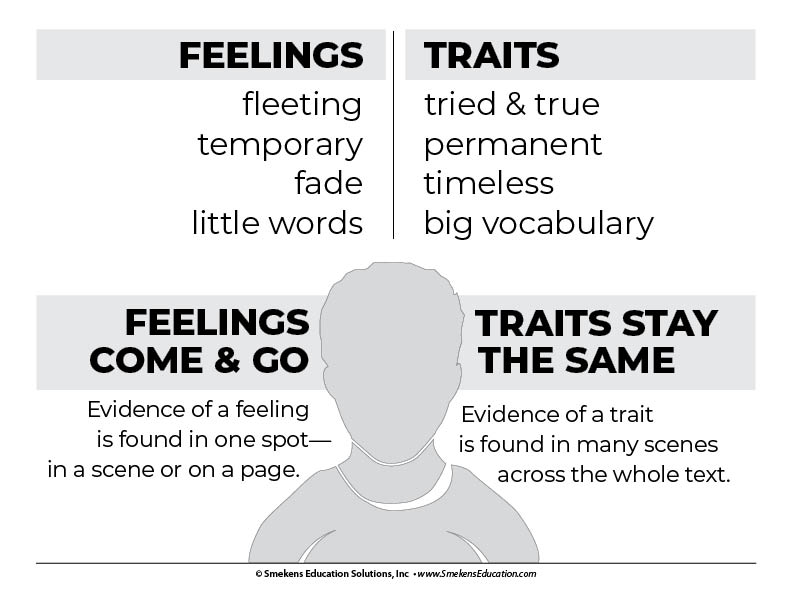
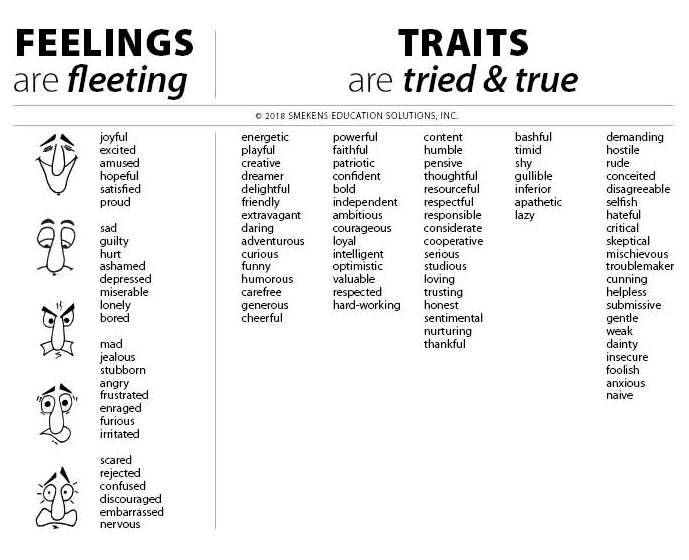
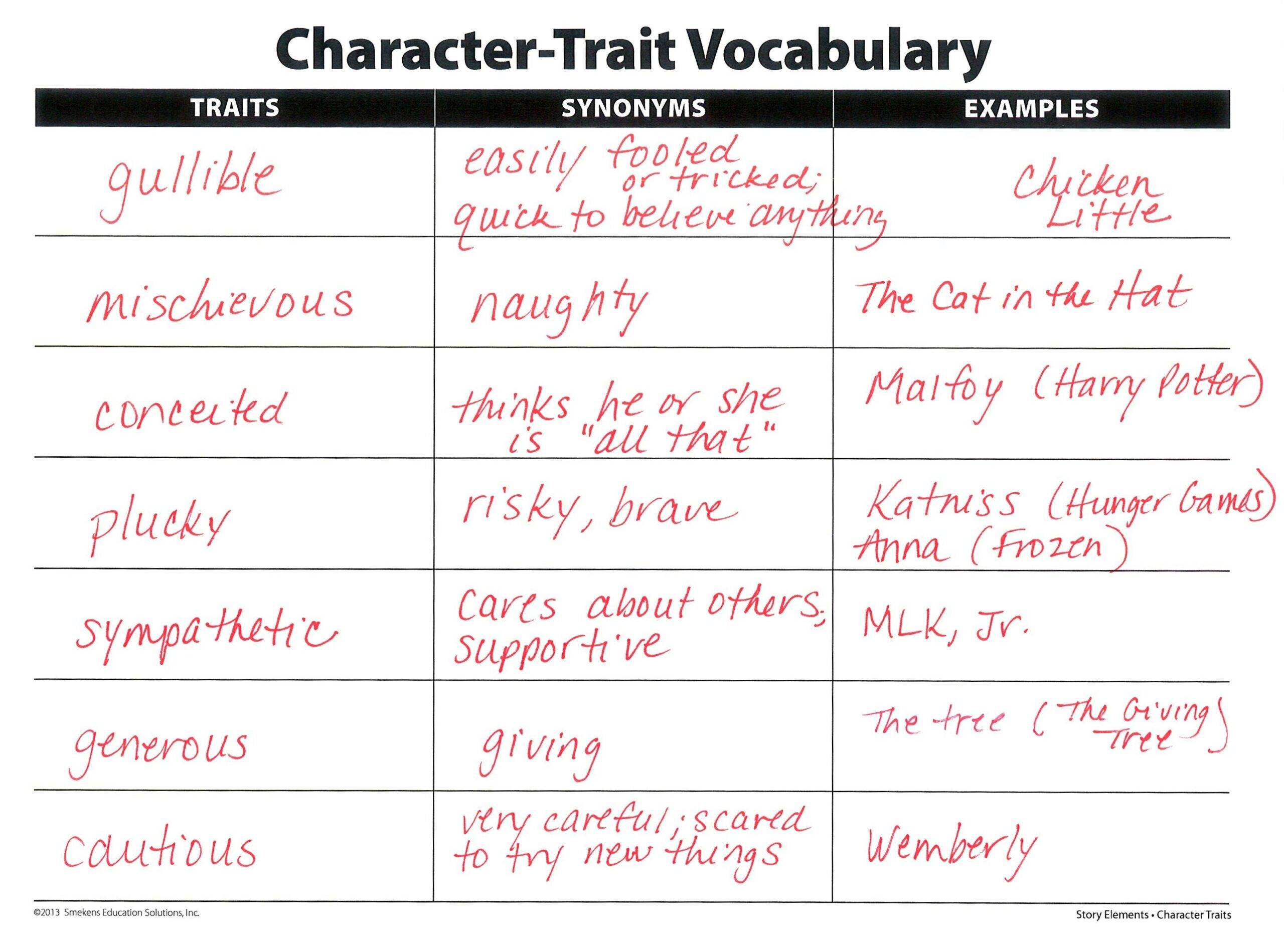
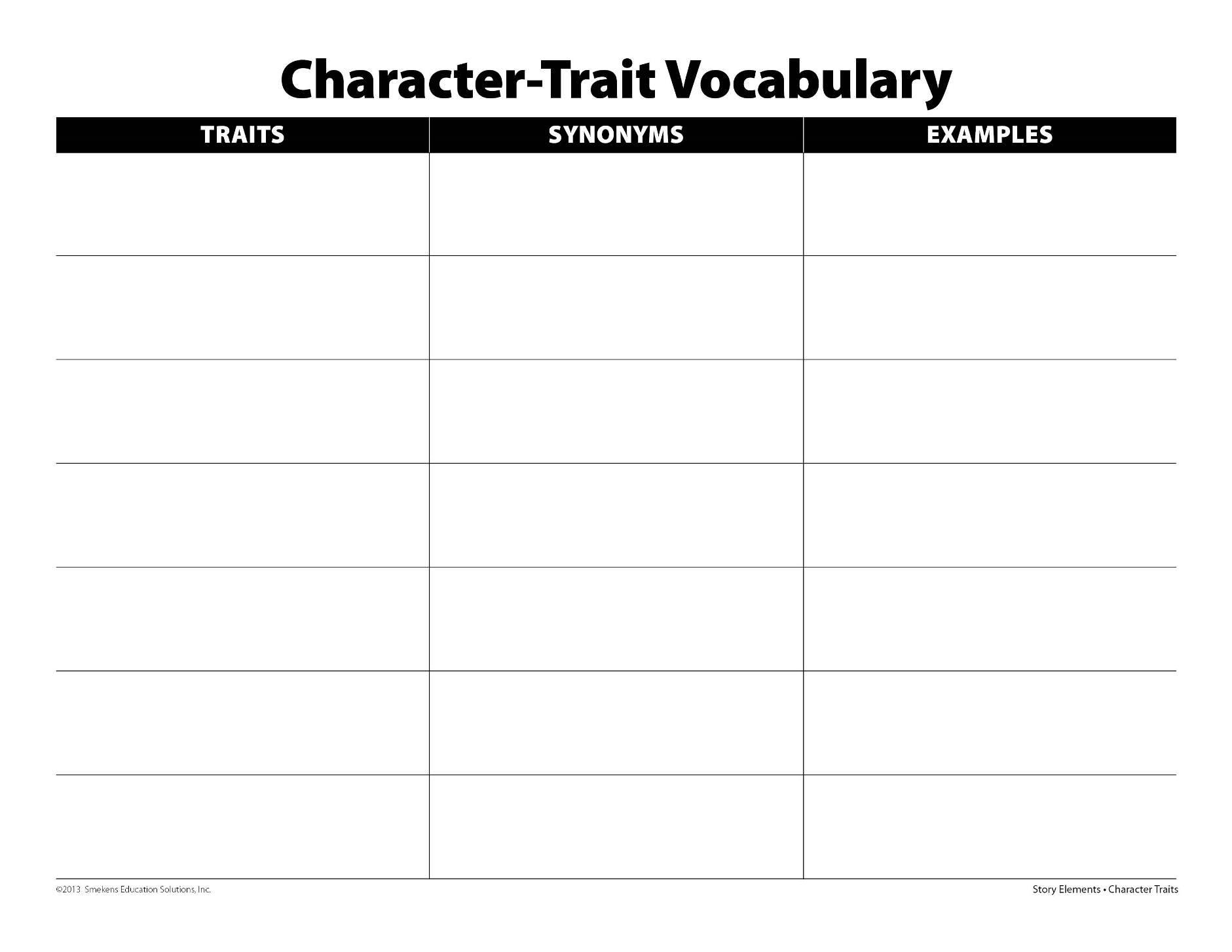
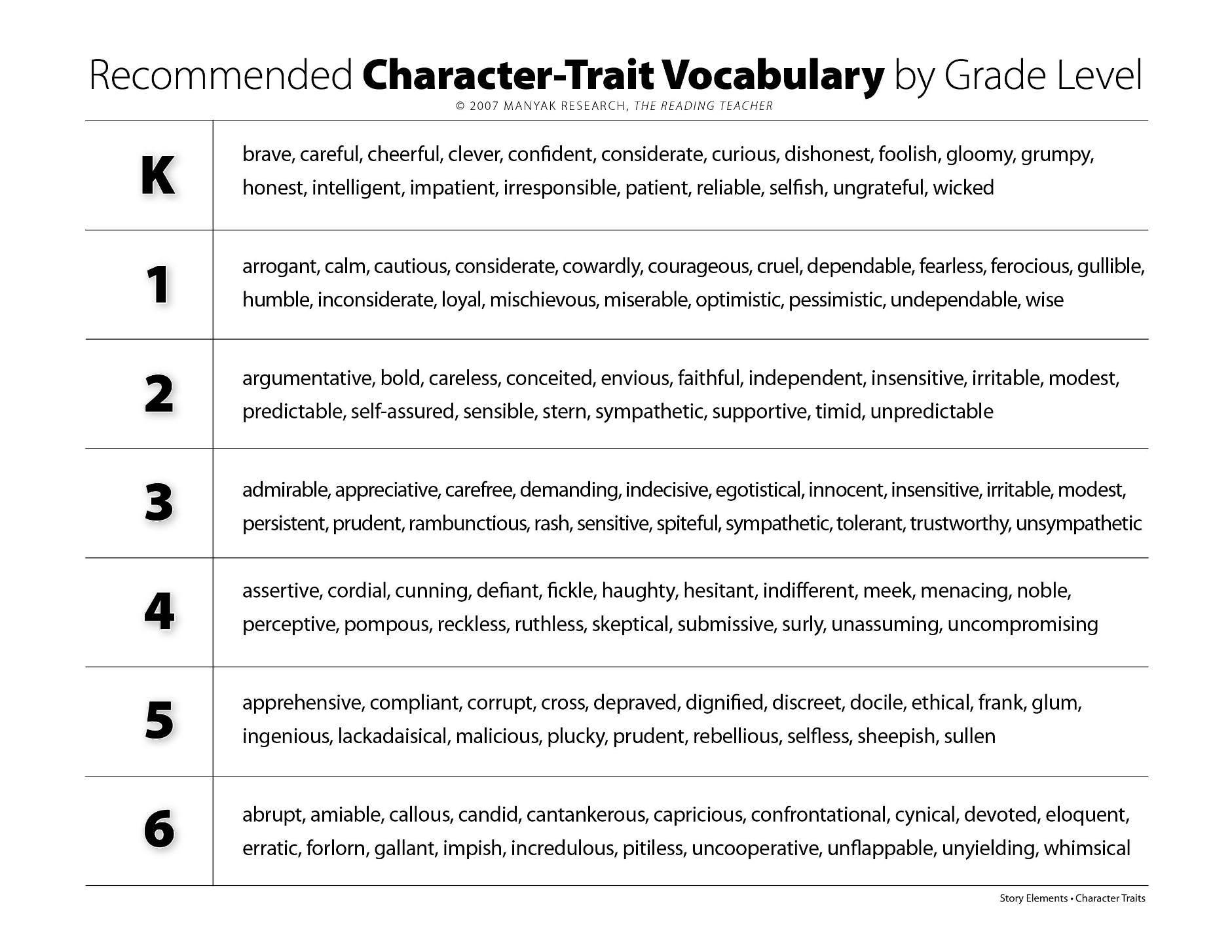

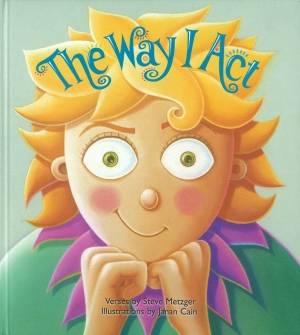
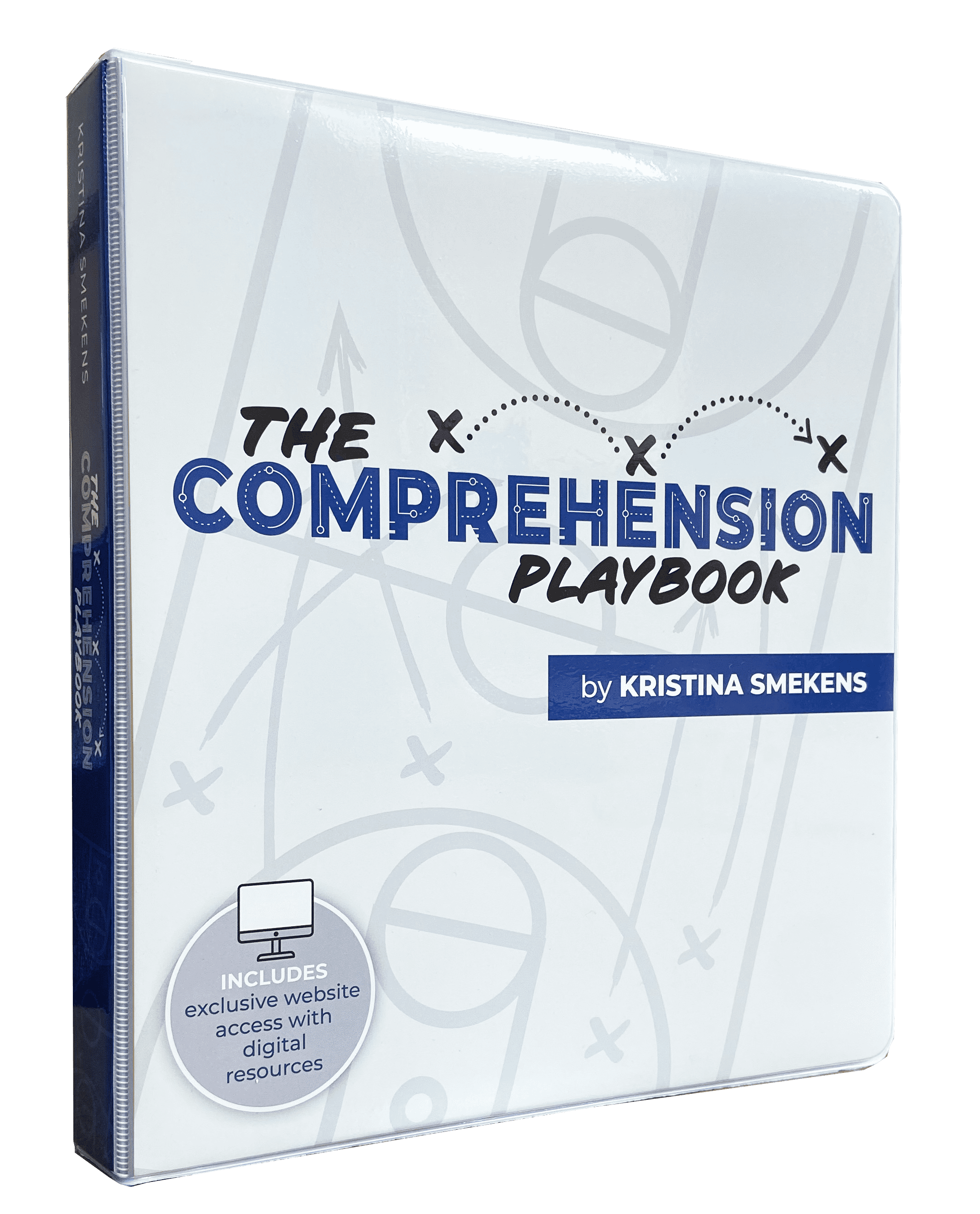



Simply and clearly stated.